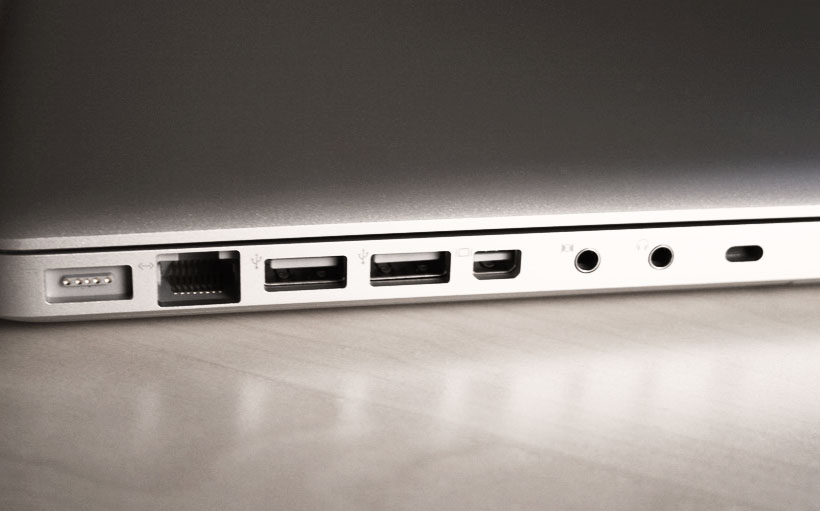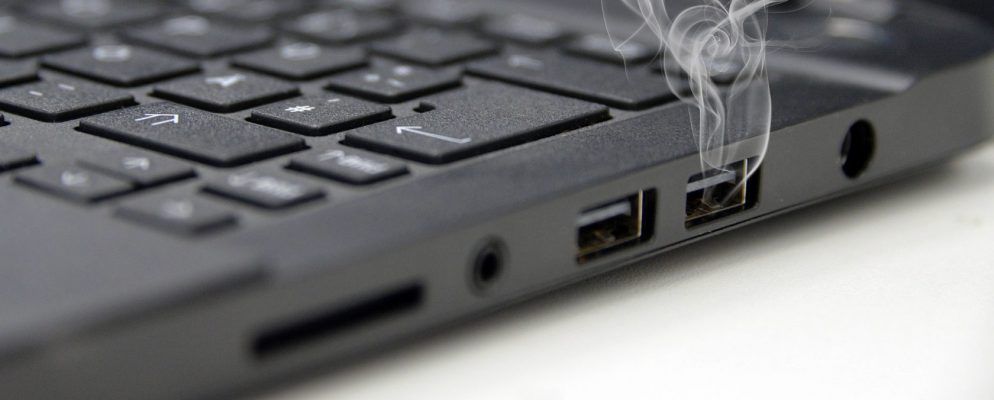1. Make sure connection to the USB port is secure
Unplug the affected device from the USB port and then plug it back in. Make sure that the connection is secure.
2. Unplugging other devices that's plugged into the USB ports
For troubleshooting purposes, unplug all USB accessories from the computer. Then start plugging in USB devices one at a time, testing each one to make sure they all work before adding the next. Sometimes two devices will have a conflict and won't work together. If you find this to be the case, contact the manufacturer for assistance.
3. Is it a new device, or a device that stopped working?
Ask yourself, is this a new device that never worked, or is it a device that you've had for a while that suddenly stopped working? If it used to work, think about what changed just before the device stopped working. Did you recently add another new device? Install a new program? Try reverting the computer to the way it was before the device stopped working. If it works again, there is an incompatibility with the device and whatever you added.
4. Check in the System Profiler
Open System Profiler from the Utilities folder, which is inside the Applications folder. From the Contents column on the left, under the Hardware header, select USB; the panel to the right will show all the USB devices that the computer recognizes. It may not identify them correctly by name, but it should have the right number of devices listed.
- If the device shows up in System Profiler, even if the device doesn't work, the issue is usually due to software. Your best solution is to try updating the drivers, creating a new user, or reinstalling the system software.
- If the device doesn't show up in System Profiler, the issue is more likely to be hardware—either the device or the USB port isn't working properly. In this event, continue on to the next item on this list. With each of the following items, check the System Profiler window (press Command-R to refresh the list) to see if the device appears.
5. USB port lacks power
If you have the device plugged into a USB hub or into your keyboard, plug it directly into one of the USB ports on the computer. If it works there, the issue is with the device to which it had been previously connected. The device may need more power than the port provides.
6. Not all USB ports in the computer are working
Check the device in all the USB ports on the computer. Also test each port using a good, working USB device. Sometimes one port on the computer will stop functioning, but others will still work. If this is the case, the computer may need to be serviced.
7. Does the device have a power cord?
Does the affected device have a power cord? If it does, try unplugging and replugging it. Make sure it's plugged into a working power outlet (you can test the outlet by plugging in a lamp or clock).
8. Check if the device is properly mounted:
1. Open Hard Disk > Applications > Utilities > Disk Utility.
2. Highlight the name of your device, if it shows Mount on top, click Mount so that it changes to Unmount.
Does your USB drive or external hard drive fail to show up on Windows PC since the USB port is not working? Follow the four methods within the page to fix 'USB port not working' error on Windows 10/8/7, and apply powerful hard drive data recovery software to recover data from a corrupted USB drive if necessary.
0115 972 1120 Serving Nottingham Derby and Leicester with computer service for pc and mac. This is my own MacBoo. Check the Hardware. Before you delve into the software labyrinth to find the solution, check the. Restart the Computer. Sometimes, you are just very lucky enough to fix this USB socket not working.
To fix USB Port Not Working on Windows 10/8/7 problem, the basic way is to restart your computer and change the USB cable. If these don't work, there still are some advanced solutions to troubleshoot.
Usb Port For Mac Not Working Windows 7
Restart your computer. Sometimes you get lucky, and the easiest solution ends up fixing the biggest. In this article we explore the steps you should take if the USB port on a Mac stops working and you're not sure why. Check the connection. We'll start with the simple stuff.
| Workable Solutions | Step-by-step Troubleshooting |
|---|---|
| Fix 1. USB port not working fixes |
|
| Fix 2. Restore data from USB | After repairing the not working USB port in Windows PC, you can reuse it now. If the storage devices are still inaccessible and you cannot read any saved data, you need to use a hard drive recovery...Full steps |
USB port stops working after removing or inserting a USB drive
'Hi there, do you know how to make a USB, an external hard drive or an SD card etc. portable storage devices to be detectable or show up in PC when the USB port is not working?
I tried to connect my device to other USB cables on my PC, but still, nothing showed up. If you have any ideas on how to repair a not working USB port and make storage devices detectable on Windows 10, please let me know. Thanks.'
A USB port allows USB devices such as USB flash drive, pen drive, external hard drive or SD card etc devices to be connected to the computer or other digital devices and guarantees the transfer of digital data through USB cables. When a USB port fails to work or stops working, Windows PCs or laptops won't be able to read or detect these external storage devices. So how do you make digital storage devices detectable and make USB port work again in Windows 10/8/7?
Relax and here in the below, you'll find reliable methods to effectively repair not working USB ports and make external storage devices detectable again without losing any data in two steps.

Quickly fix the 'USB port not working' error
When your USB flash drive, pen drive, SD card or external hard drive fails to show up on your PC due to not working USB port, you may try the two quick fixes below to get your problem solved:
1. Restart the PC and reconnect your devices to the USB port

Try to restart your PC and reconnect your portable devices to the PC again, then check out whether your devices can be read or not.
2. Change USB cable
If your USB or SD card etc devices are still undetectable by your PC, don't worry. Next, try to reconnect your devices to the PC with another new USB cable. Then you'll see whether problem is solved or not.
If not, don't worry and just follow the two steps below to get 'USB port not working' issue fixed in Windows 10/8/7 now.
Fix 'USB port not working' without losing data
By following the two parts below, you will get the USB port not working issue fixed and repair the USB port to work again:
Part 1. Fix 'USB port not working' issue on Windows PC
Here you have two methods to repair and fix USB drive not working issue in Windows 10/8/7 PC and you may follow either one to get repair USB port which has stopped working now:
Method 1. Fix 'USB port not working' error with Universal Serial BUS controller
1. Right-click on Windows logo > Select Device Manager.
2. Expand 'Universal SerialBUS controllers' > Find the device with a yellow exclamation mark.
3. Right-click on it and select 'Update Driver Software...' > Choose 'Search automatically for updated driver software'.
4. If there is no new update, right-click and select Uninstall > OK.
5. Go to the Action tab in the Device Manager window > Select Scan for hardware changes > Then the USB port will appear.
After this, reconnect your portable devices to your PC and there your USB or SD card etc devices will show up on your PC now.
If it still not working, relax and follow Method 2 to get your issue solved.
Method 2. Fix 'USB port not working' issue with Windows Troubleshooter
1. Type: troubleshoot in the search bar and click Troubleshooting.
2. Go to 'Hardware and Sound' > 'Hardware and Devices' > Click on Advanced and check Apply repairs automatically.
3. Click Next and let the program check and fix existing problems in your drive > Click Apply this fix and click Next.
4. Click Enable, close Troubleshooter and restart your PC to keep all changes.
After finishing the process, you should be able to use your USB drive or external hard drive etc portable devices to save or transfer data to your PC again.
Fix Usb Ports Windows 10
Part 2. Restore data from USB etc devices after fixing a not working USB port
After repairing the not working USB port in Windows PC, you can now try to connect your USB or SD card etc portable storage devices to your PC to transfer data.
If the storage devices are still inaccessible and you cannot read any saved data, don't worry. Use powerful hard drive data recovery software - EaseUS Data Recovery Wizard to find your data within 3 simple steps.
Just download this software for free and follow these steps below to restore lost data from portable USB or other devices on Windows 10/8/7 now:
Step 1. Run USB data recovery software.
Connect the USB flash drive to your computer and launch EaseUS USB data recovery software on your PC. Select your USB drive which marks as a removable disk, and click 'Scan' to start finding your lost files.
Step 2. Scan all lost files from USB.
EaseUS Data Recovery Wizard will thoroughly scan your USB flash drive and find all your lost data on it. After the scanning process, use the Filter feature to filter a specific file type. You can check and preview found USB files in this program.
Step 3. Restore all lost files from USB.
A double-click will allow you to preview the file results. Choose the target files and click 'Recover' to save them to a secure location on your PC or other external storage devices.
Usb 3.0 Not Working Properly
After this, you can reformat the portable storage devices into NTFS or FAT32 so to make it reusable for storing or transferring data again.
